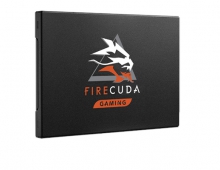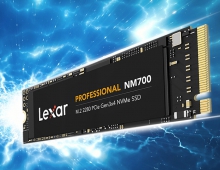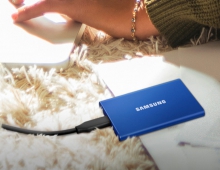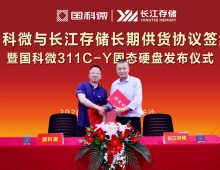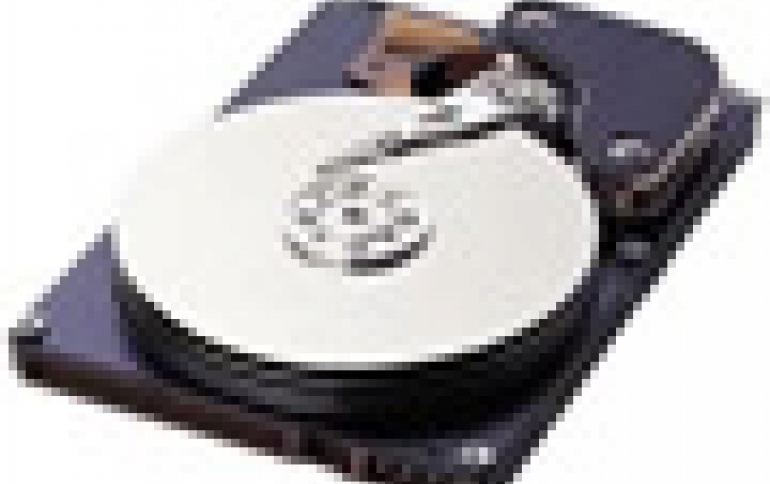
Cache SSDs Seen To Gain Ground Over Hybrid Drives
Although Hybrid hard disks drives have been designed to meet the storage needs of ultrabooks, they are expected loose ground as cache SSDs are becoming more affordable.
Hybrid hard disk drives are featuring a built-in layer of NAND flash memory and a traditional HDD.
Cache SSDs are offering flash storage capacity typically employed in systems alongside with HDDs, with both elements existing side by side.
According to IHS iSuppli, cache SSDs will see their shipments rise even more this year to 23.9 million units, up by a 2,660% from just 864,000 units in 2011. Shipments will then jump to 67.7 million units in 2013, cross the hundred-million-unit mark in 2015, and hit 163 million units by 2016, IHS forecast.
Shipments of hybrid HDDs are estimated to reach two million units this year, up from one million in 2011, on their way to reaching 25 million units by 2016, IHS indicated.
Dedicated SSDs that contain no cache component will attain shipments this year of 18 million in consumer applications, gradually ramping up to 69 million units in 2016, IHS added.
The Seagate Momentus XT hybrid disc is featuring up to 8GB of single-level-cell NAND and 750GB of memory on two 2.5-inch platters. Western Digital and Toshiba are also offering hybrid HDDs containing 8GB or more of NAND cache.
"The cache SSD solution was first hit upon by PC manufacturers because the use of a dedicated solid state drive proved too expensive when passed on to consumers in the retail market," said Ryan Chien, analyst for memory & storage at IHS. "However, a combined physical hard disk drive with a smaller cache component allowed PC makers to reap the advantages of faster responsiveness and larger capacities while keeping costs down."
Cache SSDs also offer more advantages than hybrid HDDs. For instance, discrete cache SSDs and HDDs are much more scalable and efficient for mainstream storage, given the broad selection of drive manufacturers, IHS said. And because SSDs and HDDs have lately been focused on more mobile sizes, few changes are needed for cache SSDs or thin HDDs to keep their manufacturing processes cost effective.
Moreover, the expected evolution of cache SSDs to a swappable mSATA form factor not only helps narrow the convenience advantage currently enjoyed by hybrid HDDs but also facilitates upgradability akin to DRAM modules or USB drives, IHS noted. HDDs sized 7mm are available with 500GB in 2.5-inch platters, with a 5mm z-height as the next step, while hybrid HDDs are still 9mm high. SATA SSDs are also getting denser, and NAND on the motherboard is becoming more feasible.
IHS believes that these benefits overall highlight the strength of cache SSDs over those of hybrids, which tend to make compromises in exchange for volume implementation. Cost concerns, longer design cycles and tighter engineering tolerances in the case of hybrid HDDs also add to their difficulty of use in ultrabooks, IHS added.
As a result, cache SSDs will remain as the favored storage solution in ultrabooks, with penetration of the desktop and the rest of the notebook segments anticipated to follow.
Cache SSDs are offering flash storage capacity typically employed in systems alongside with HDDs, with both elements existing side by side.
According to IHS iSuppli, cache SSDs will see their shipments rise even more this year to 23.9 million units, up by a 2,660% from just 864,000 units in 2011. Shipments will then jump to 67.7 million units in 2013, cross the hundred-million-unit mark in 2015, and hit 163 million units by 2016, IHS forecast.
Shipments of hybrid HDDs are estimated to reach two million units this year, up from one million in 2011, on their way to reaching 25 million units by 2016, IHS indicated.
Dedicated SSDs that contain no cache component will attain shipments this year of 18 million in consumer applications, gradually ramping up to 69 million units in 2016, IHS added.
The Seagate Momentus XT hybrid disc is featuring up to 8GB of single-level-cell NAND and 750GB of memory on two 2.5-inch platters. Western Digital and Toshiba are also offering hybrid HDDs containing 8GB or more of NAND cache.
"The cache SSD solution was first hit upon by PC manufacturers because the use of a dedicated solid state drive proved too expensive when passed on to consumers in the retail market," said Ryan Chien, analyst for memory & storage at IHS. "However, a combined physical hard disk drive with a smaller cache component allowed PC makers to reap the advantages of faster responsiveness and larger capacities while keeping costs down."
Cache SSDs also offer more advantages than hybrid HDDs. For instance, discrete cache SSDs and HDDs are much more scalable and efficient for mainstream storage, given the broad selection of drive manufacturers, IHS said. And because SSDs and HDDs have lately been focused on more mobile sizes, few changes are needed for cache SSDs or thin HDDs to keep their manufacturing processes cost effective.
Moreover, the expected evolution of cache SSDs to a swappable mSATA form factor not only helps narrow the convenience advantage currently enjoyed by hybrid HDDs but also facilitates upgradability akin to DRAM modules or USB drives, IHS noted. HDDs sized 7mm are available with 500GB in 2.5-inch platters, with a 5mm z-height as the next step, while hybrid HDDs are still 9mm high. SATA SSDs are also getting denser, and NAND on the motherboard is becoming more feasible.
IHS believes that these benefits overall highlight the strength of cache SSDs over those of hybrids, which tend to make compromises in exchange for volume implementation. Cost concerns, longer design cycles and tighter engineering tolerances in the case of hybrid HDDs also add to their difficulty of use in ultrabooks, IHS added.
As a result, cache SSDs will remain as the favored storage solution in ultrabooks, with penetration of the desktop and the rest of the notebook segments anticipated to follow.




